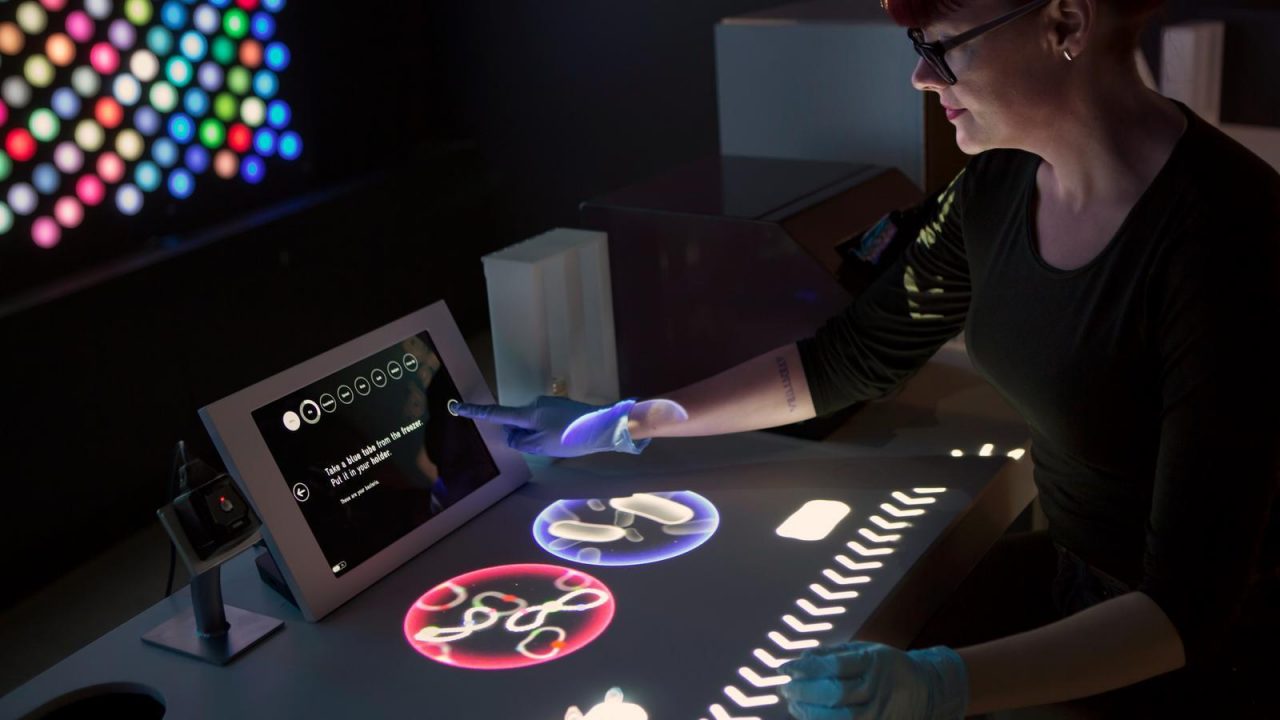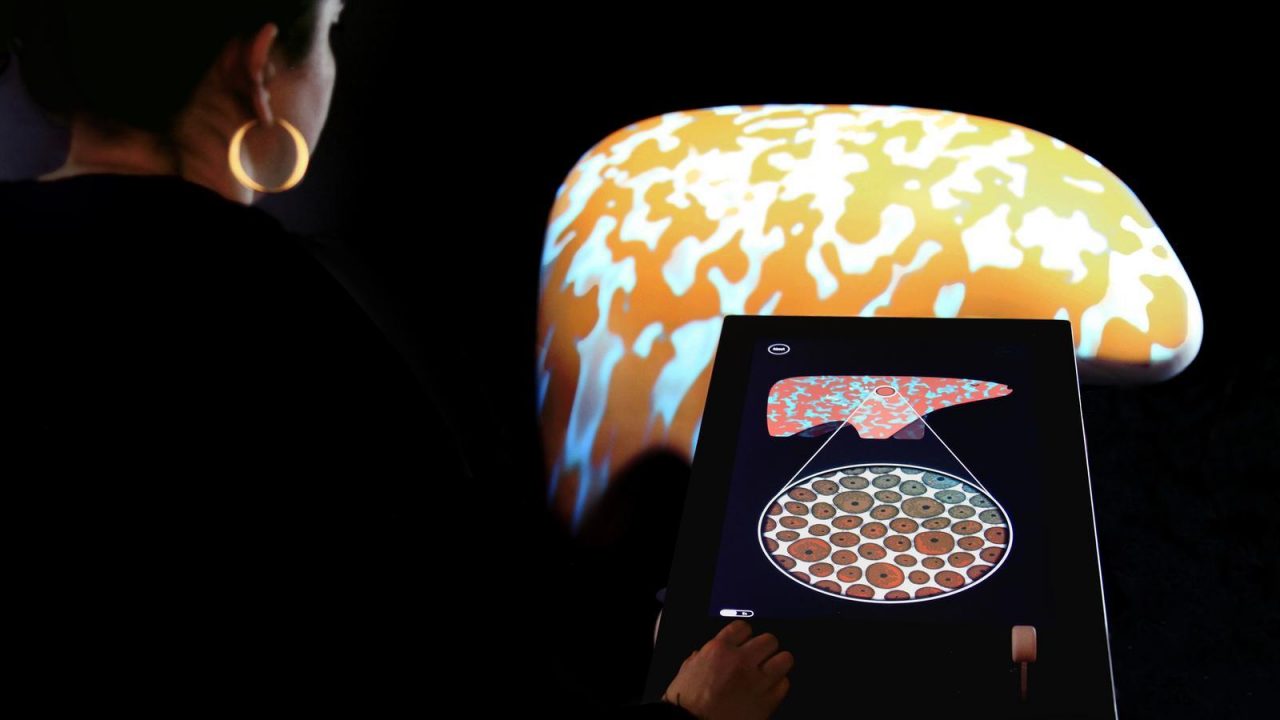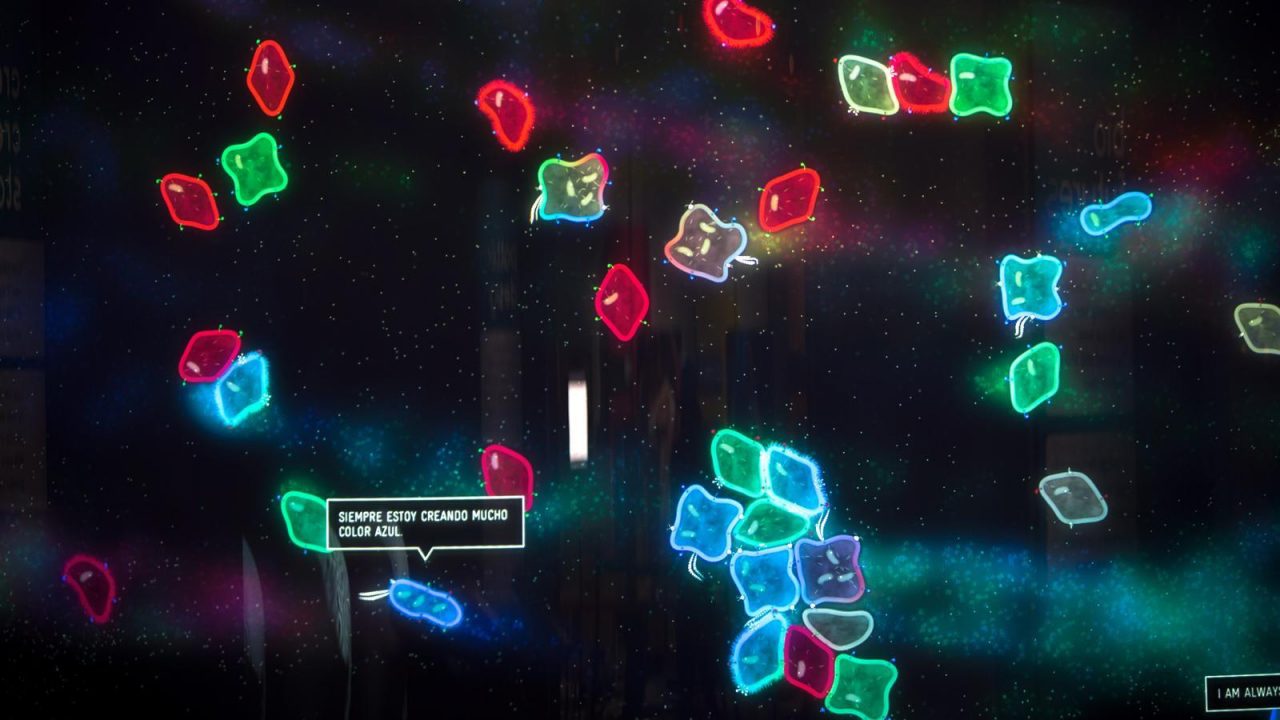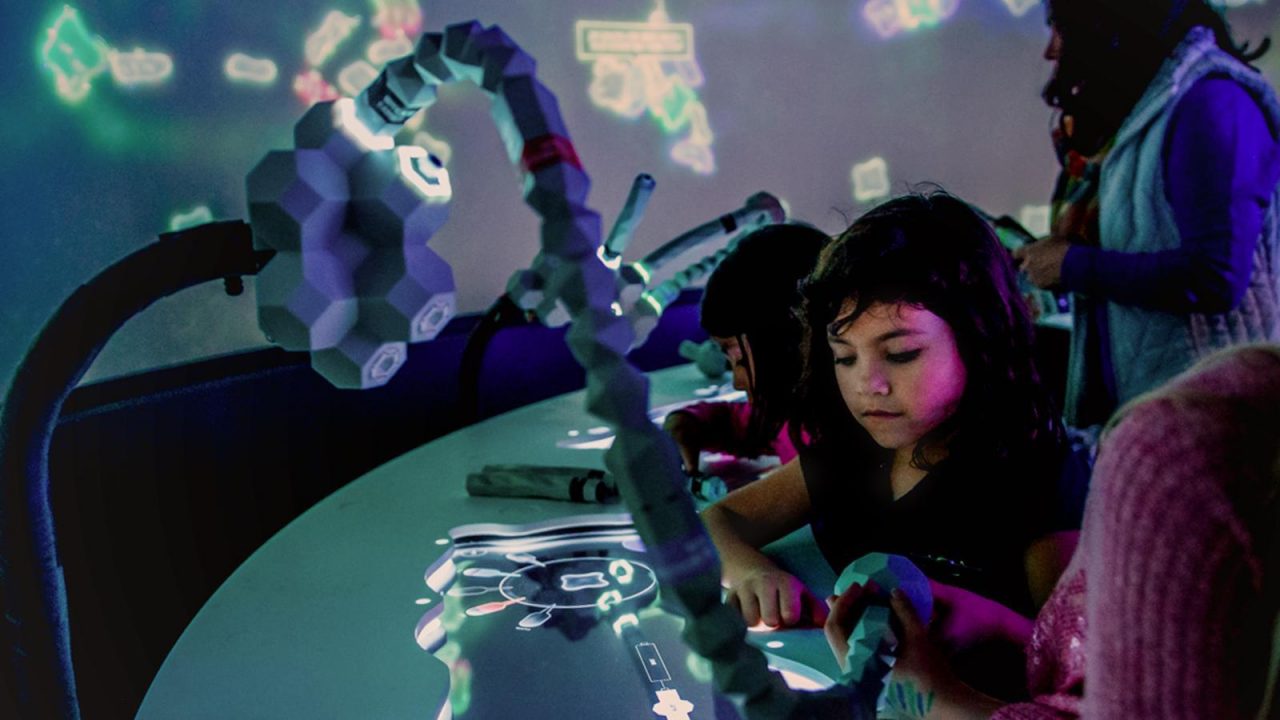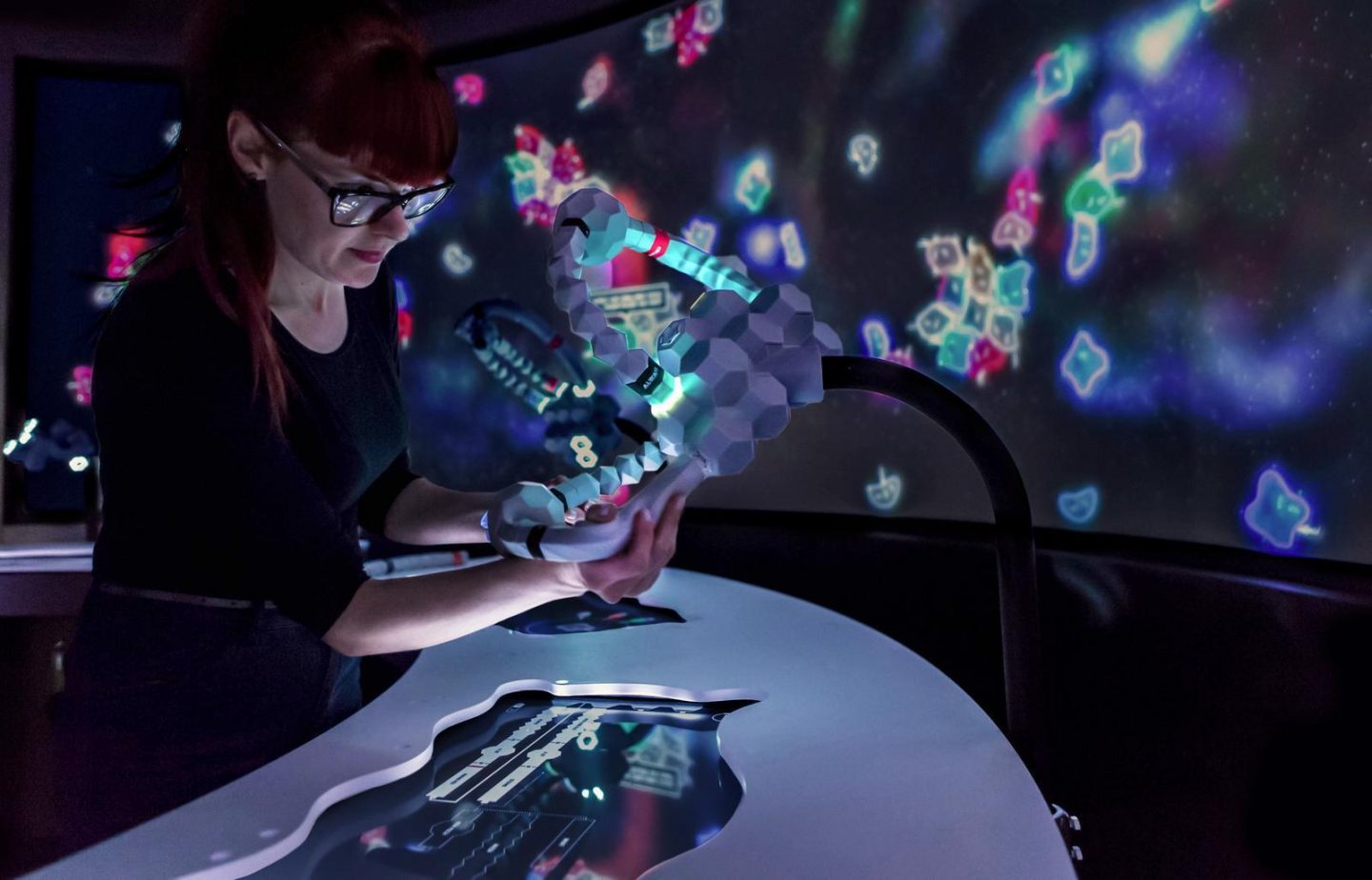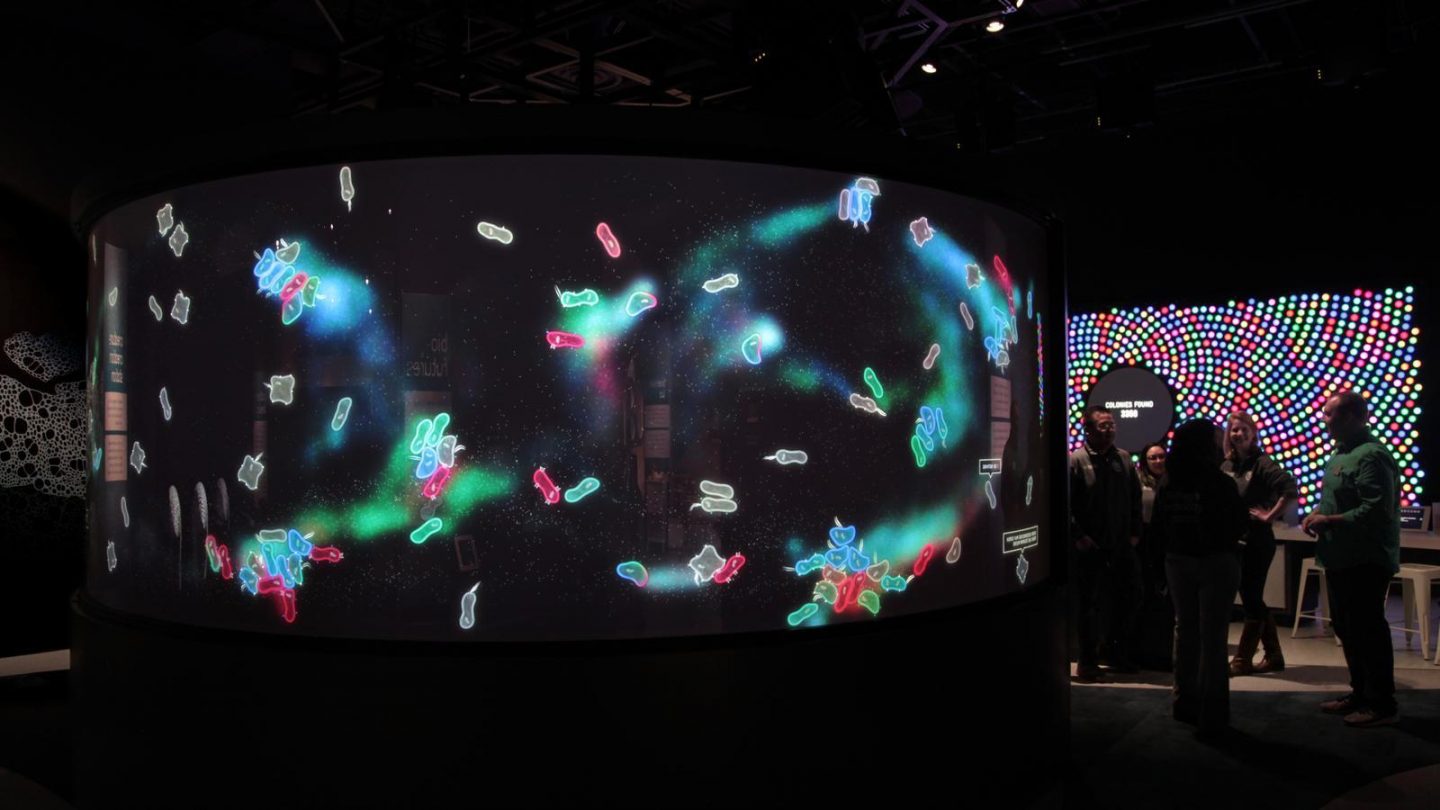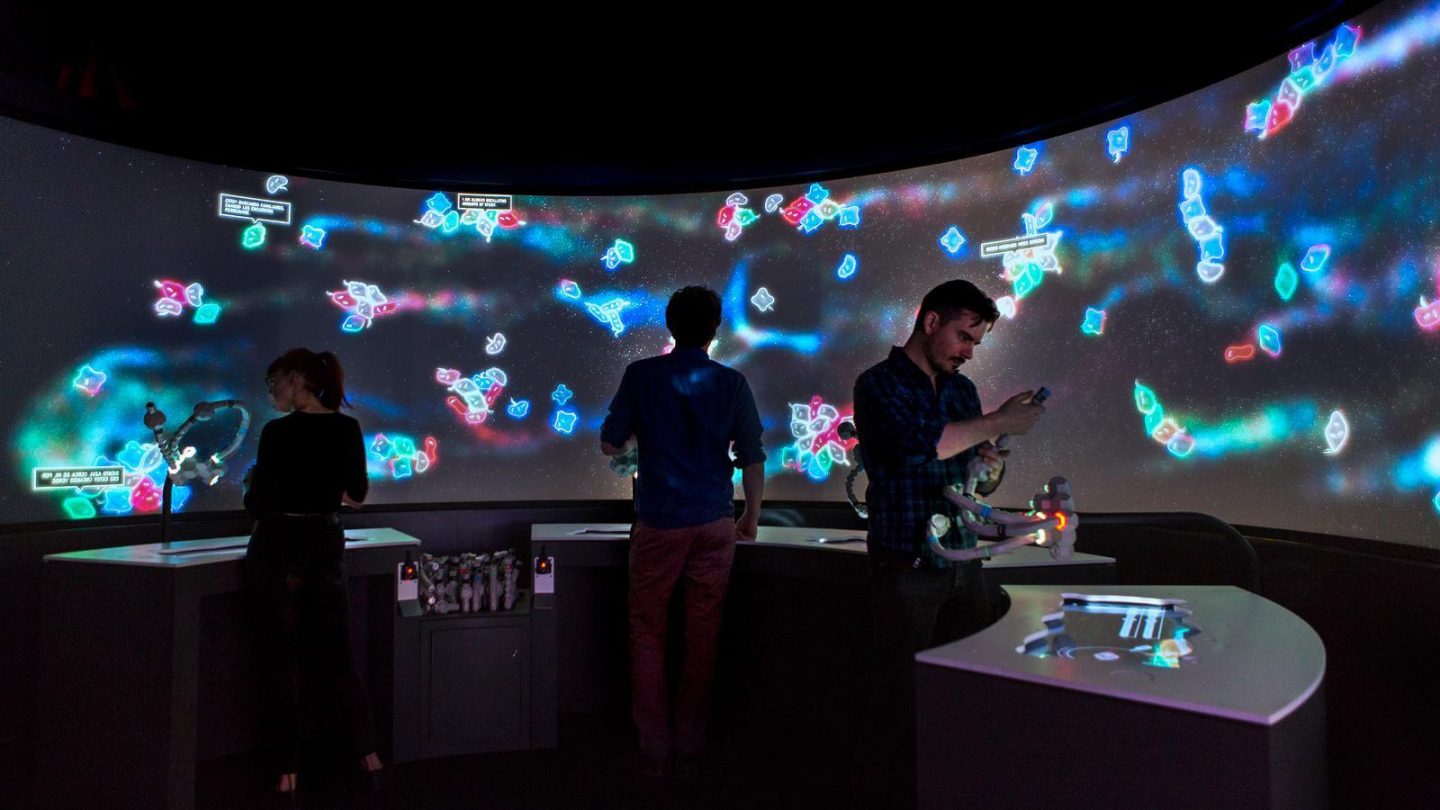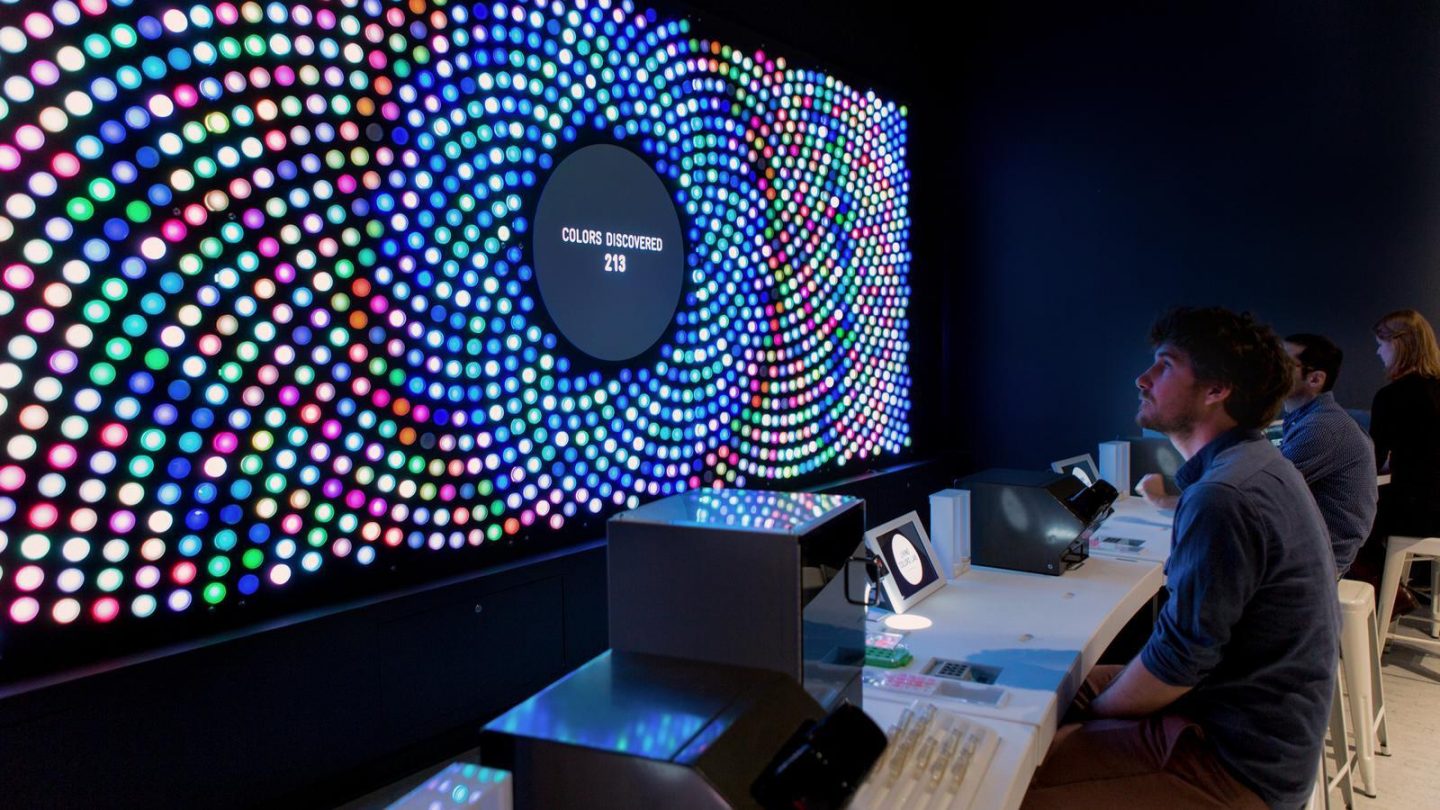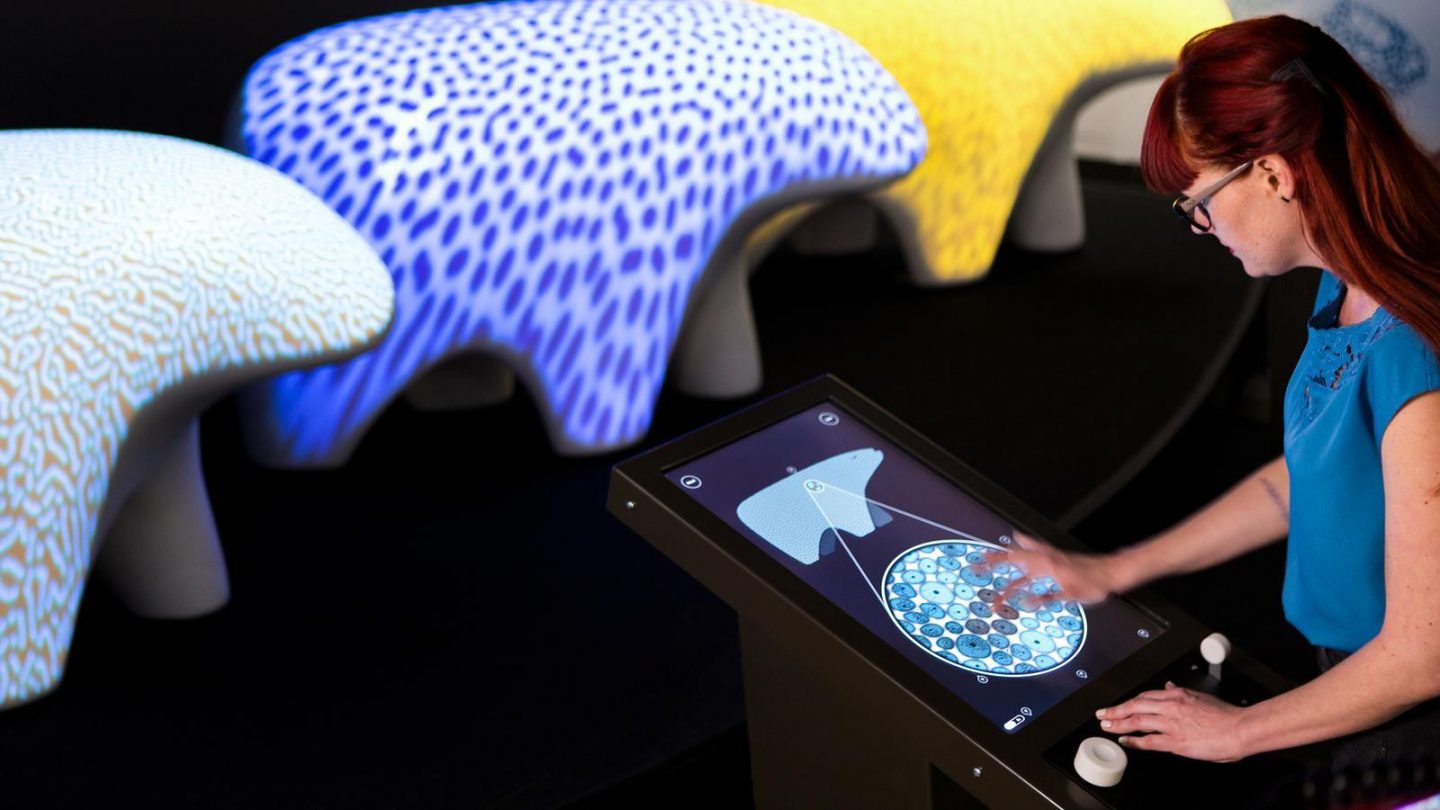BioDesign Studio
Welcome to the world's first synthetic biology learning lab.
Overview
The man-made creation and alteration of lifeforms is a complex topic. We broke it down for visitors to the Tech Museum, demystifying one of the least-understood and most controversial topics in modern science.
Services
Exhibit Design, Media Design, Media & Software Development
The Details
This interactive exhibition puts visitors at the forefront of biological design, allowing them to experiment with the building blocks of life. At the Living Color Lab, they alter bacterial DNA, while a projection-based AR experience reveals microscopic changes in real time. In the Pattern Design exhibit, visitors manipulate nature’s emergent systems to craft custom coat patterns on life-size animal sculptures. At the Creature Creation Station, they snap together DNA-inspired building blocks to engineer virtual organisms, which then interact in a dynamic 30-foot "bio pool."
Through hands-on exploration, visitors gain a deeper understanding of genetics, evolution, and the power of biological innovation.
